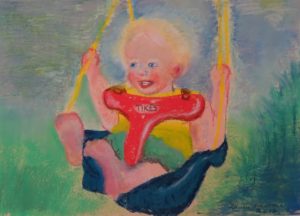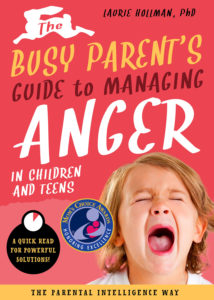Toddler Tantrums
WHAT IS A TANTRUM?

A tantrum occurs when a child’s whole system of managing feelings and thoughts collapse. It is a communication that happens suddenly. The child may lay down on the floor, scream, kick her feet, throw her arms about, and twist her body violently. If the parent becomes frantic, so will the child. It’s hard to find the trigger and is often minor such as leaving a fun place, transitioning to a new activity, a prohibition, or temporary frustration
1.It does NOT mean the parent or child are bad. No one is bad.
2. The child is desperately seeking some control over her body and pent-up emotions, trying to find her own limits while expressing herself with this behavior.
3. The ultimate goal for the parent is to help the child learn what a tantrum means and help the child find her own limits. It is an expression in an external action of inner feelings over which the child is seeking control.
Developmental Time Table

After the age of 3 most children can find some limits to their emotions without a tantrum. They can generally start at about 18 months to two years. Please do not consider this “terrible twos” an unwarranted categorization that helps no one.
Safety

To keep your child safe, if they cannot respond to words alone and may seem to hurt themselves, gently restrain the child saying soothing words (not angry words). Speak quietly and gently and hold the child as gently yet firmly as possible, all the while humming or saying something like, “It’s ok. We’ll work this out. I’m on your side.”
After the Tantrum to Prevent Recurrence

To prevent recurring tantrums, at a quiet time, talk briefly to your child explaining that you understand they were upset and couldn’t explain it. But now we can talk together. Often it helps to do this over a snack that shifts moods and comforts as well.
Another time, explain other ideas the child may have when upset. “Sweetie, is there another way to tell me you’re upset?” Give the child time to respond. If the child isn’t too verbal, then after waiting for a response, offer some suggestions. “Could you tap me on the arm and say I need you?” “Could you say, “I’m upset (scared, sad, etc.)?” “I want to hear whatever you think and feel.”
To do the above requires introducing feeling words early in your child’s beginning vocabulary like happy, sad, upset, mad, scared. You can say the word and draw a simple face with that expression or your child can also do the drawing.
Indecision

Some little kids are indecisive about choices. So you may offer two choices and say pick one. If they are still indecisive and you sense their emotional mood rising, say to choose one now and later the other. This is giving your child a lesson on decision making while gently collaborating with them even this young. Empathize the choices are hard to make but everyone can change their minds sometimes.
Family Stressors

“What’s going on in your child’s mind?”
Some kids are more vulnerable to frustration and anger when there are family stressors such as parental arguments, changes in the household, separations, divorces, new residences, and beginning child care. Always prepare kids ahead for such changes in simple, gentle words, reminding them that you love them. Look out for kids blaming themselves for parent problems.
Sensory Processing

Some children have sensory processing issues. That is, they have trouble taking in and understand information and if confused, may tantrum. Tone down sounds and any visual stimulation and even touching if your child needs space. May your requests simple and deliver them one at a time. In other words, overstimulation can lead to tantrums, unique to each individual child. Unless touching is a source of too much stimulation, a gentle hug helps contain emotions by giving both needed attention and holding the child’s body still when they cannot do so themselves.
Transitions

Unexplained or even planned transitions can lead to distress especially if the child has had undue separations from the parent before they are ready developmentally as is expected at the toddler ages. Use daily routines that establish expected sequences in your child’s mind that in time they will internalize and anticipate calmly.
Public Tantrums

Tantrums in public are difficult. Even if you’re doing needed shopping, leave the cart, and gently hug and then carry your child outside to calm. Return another time, preferably without the child. The next time you go to a public place like a store or a friends party, prepare the child ahead that you will always be nearby and if something is upsetting to tell you and together you will make things better. Don’t underestimate these words. You must follow up on them as promised.
Leaving a place of distress is NOT a punishment, nor should it be perceived that way. It is a measure designed to calm the child and parent down so they can then use language to work things out. Keep in mind at all times, distress is not indicative of a “bad” child, no matter what the cause. Take that word out of your vocabulary.
Attention Span of a Toddler
Toddlers’ attention spans are short. They are usually very mobile (toddler means wanderer) and not quite capable of using rules very well or consistently.
Review

The primary immediate goal of responding to a tantrum is for a calm parent to speak quietly, comfort, and distract if possible, but stay in tune with your child’s feelings. Feeling understood is a wonderful antidote to the child prone to tantrums.